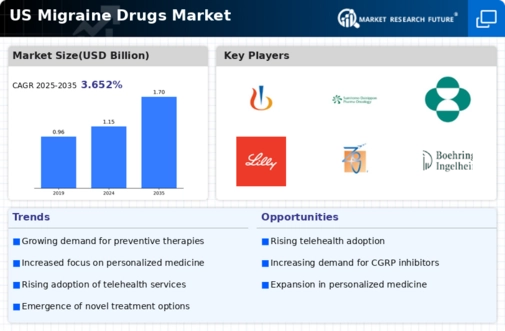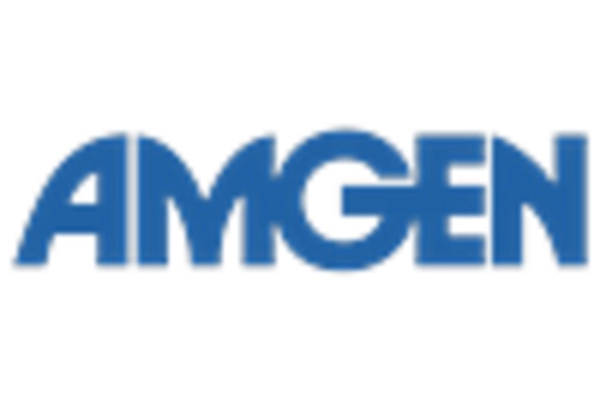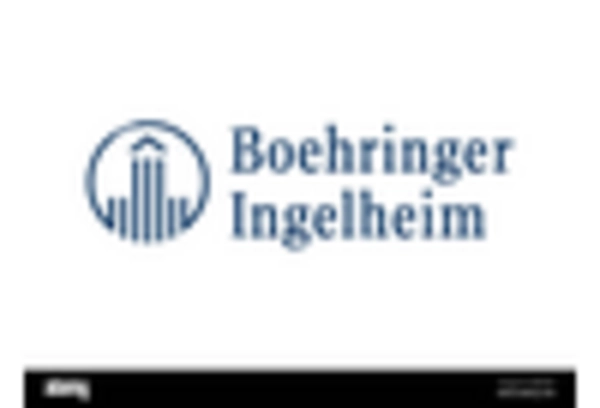The migraine drugs market is characterized by a dynamic competitive landscape, driven by increasing prevalence rates and a growing demand for effective treatment options. Key players such as AbbVie Inc (US), Eli Lilly and Company (US), and Amgen Inc (US) are strategically positioned to leverage innovation and expand their market presence. AbbVie Inc (US) focuses on developing novel therapies, particularly in the CGRP inhibitor segment, while Eli Lilly and Company (US) emphasizes partnerships to enhance its product pipeline. Amgen Inc (US) is also investing in research and development to diversify its offerings, indicating a collective shift towards innovation as a primary growth driver.
The market structure appears moderately fragmented, with several companies vying for market share. Key players are adopting various business tactics, such as localizing manufacturing and optimizing supply chains, to enhance operational efficiency. This competitive structure allows for a diverse range of products and treatment options, catering to the varying needs of patients. The influence of major players is significant, as their strategic decisions often set the tone for market trends and consumer expectations.
In October 2025, AbbVie Inc (US) announced the launch of a new formulation of its migraine treatment, which is expected to improve patient adherence and outcomes. This strategic move underscores AbbVie’s commitment to innovation and its focus on addressing unmet medical needs in the migraine space. By enhancing the efficacy and convenience of its products, AbbVie aims to solidify its market position and attract a broader patient base.
In September 2025, Eli Lilly and Company (US) entered into a collaboration with a digital health company to integrate AI-driven solutions into its migraine management programs. This partnership is strategically important as it reflects a growing trend towards digitalization in healthcare, enabling more personalized treatment approaches. By leveraging technology, Eli Lilly seeks to enhance patient engagement and improve treatment adherence, potentially leading to better health outcomes.
In August 2025, Amgen Inc (US) expanded its manufacturing capabilities in the US to meet the rising demand for its migraine therapies. This expansion is indicative of Amgen’s proactive approach to supply chain optimization, ensuring that it can respond swiftly to market needs. By increasing production capacity, Amgen positions itself to capture a larger share of the market, particularly as competition intensifies.
As of November 2025, current trends in the migraine drugs market include a strong emphasis on digitalization, sustainability, and the integration of AI technologies. Strategic alliances are increasingly shaping the competitive landscape, allowing companies to pool resources and expertise. Looking ahead, competitive differentiation is likely to evolve, with a shift from price-based competition towards innovation, technological advancements, and supply chain reliability. Companies that can effectively navigate these trends will likely emerge as leaders in the market.

















Leave a Comment